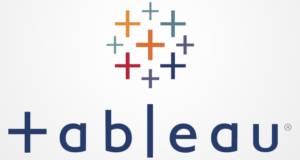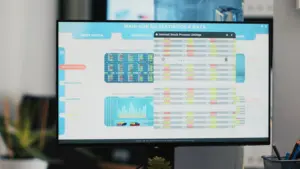Thousands of companies worldwide use Tableau, an incredibly potent visualisation tool that specialises in business analytics and analysis.
Tableau’s user-friendly drag-and-drop interface, community forum, and numerous online tutorials allow users to create stunning visualisations quickly. Nonetheless, there are a few typical errors that people make frequently.
As a tech enthusiast, here are some tips and techniques that can ensure you produce an effective visualisation. So if you are a tech enthusiast and you want to learn more about Tableau, you can check out our Tableau online training.
1.Keep it clean
Users can easily construct elaborate, dynamic infographics by mixing various graphics with the dashboard function. When implemented properly, this can be a very helpful tool for business analysts to present data in an understandable manner. But all too frequently, these dashboards may seem confusing and cluttered.
One simple approach to achieve this is to reduce the title language and eliminate words that are repeated. To make the most relevant information visible to the reader right away, another easy adjustment is to put the most significant facts or numbers at the top of the page.
It is generally recommended that a dashboard display no more than two or three visualisations. Beyond this point, it may become too complex for the end user to understand and can also affect speed and performance.
2.Use Simple Graphs
We know instinctively that when we use graphs, we will be more likely to stick with this dashboard. Based on my observations, Tableau line or bar graphs make up 70% of the graphics I utilise in my reports. Why? Other representations are far less obvious than human comparison of lengths and slopes.
3.Foster Understanding Tableau
How can we make our graphs easier to understand? A simple data structure will enable us to quickly comprehend the various Tableau graphics kinds. For instance, the same data may be shown in the lower graph in a different way, such as in the states’ alphabetical order or by the largest number. Which is the easiest to read, in your opinion?
4.Pies are Better as Desserts
The pie chart is one of Tableau’s most popular graphs. It has some benefits, foremost among them being its ability to display a large amount of data in a compact area. That’s the only drawback; it also has the inability to visually compare regions that are really similar and a propensity to exceed dimensions and become illegible. We advise against utilising it.
5.Stay away from 3D
Tableau’s 3D charts are highly alluring since they appear so good at first glance. Are they, however, truly helpful? No, they don’t; they really cause more confusion than they do clarity. Adding perspective to a graphic facilitates inaccurate interpretation of the data and increases the likelihood that we would base our decisions on flawed data analysis. Select minimalism as your dashboard.
6.Get your Filter Right
When making a graph, one item to consider is the method we’ll use to filter the data. The information we select communicates a message; if we don’t make this message evident before designing a graph, we risk contradicting ourselves. For instance, there is a distinction between using a sample span of 10 or 50 years while discussing global warming in order to accurately represent the seriousness of the issue.
7.Lean on Skewed Images
Skewed photos are one way to make a bigger impression; they can be enlarged or reduced, but not to their “natural” size. These pictures skew perception and produce an overstated discrepancy compared to the actual numbers. In order to make a significant first impression, these are useful; be careful, however, as these can be confusing.
8.Data Ink Ratio
Every drop of ink you use to build a graph must “paint” the data. The primary information must be emphasised by the colour that is nearest to it; if secondary elements or background colours are used, confusion may result and comprehension may become more difficult.
9.Apply common sense
The most crucial advice we have left is to exercise common sense. Before building a dashboard, it’s a good idea to take a moment to consider the message we want to deliver and the components that will make that possible. Sort what is actually required from what isn’t; try to keep the graph as small as possible so that it just has the essential parameters and offers context and information. The most significant obstacle for those who use Tableau and are looking to take advantage of its benefits.
Conclusion To learn more about Tableau, check out the online Tableau course.





























